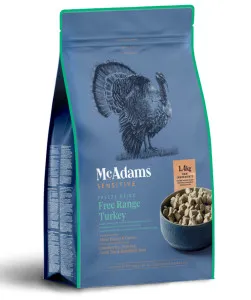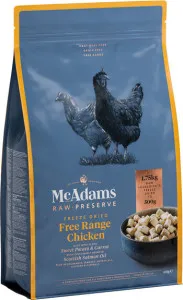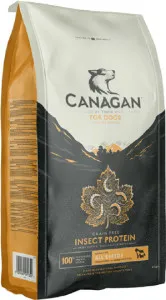What Is the 10% Rule for Feeding Dogs?
The 10% rule for feeding dogs is a guideline that recommends treats and extras (like table scraps or snacks) should make up no more than 10% of your dog’s daily caloric intake. The remaining 90% should come from a balanced, high-quality dog food to ensure proper nutrition. This rule helps prevent obesity and maintains a healthy diet for your pet.
Why the 10% Rule Matters for Your Dog’s Health
Many dog owners love spoiling their pets with treats, but overdoing it can lead to serious health issues. Following the 10% rule ensures your dog gets the right balance of nutrients without excess calories. Here’s why it’s important:
- Prevents obesity: Excess treats can lead to weight gain, increasing risks for diabetes, joint problems, and heart disease.
- Maintains balanced nutrition: Too many snacks can displace essential nutrients from their main meals.
- Avoids digestive issues: Sudden changes or too many extras can upset your dog’s stomach.
- Encourages good behavior: Using treats wisely keeps them effective for training.
- Small dogs (under 20 lbs): 200–400 calories/day
- Medium dogs (20–50 lbs): 500–900 calories/day
- Large dogs (50+ lbs): 1,000–1,800+ calories/day
- 1 small training treat (5–10 calories each)
- ½ slice of cheese (50 calories)
- A few baby carrots (low-calorie option)
- Unmeasured treats: Handing out snacks without tracking adds up fast.
- High-calorie human foods: Cheese, peanut butter, or meat scraps can quickly exceed 10%.
- Ignoring packaging labels: Treats often list calories per serving—check before feeding.
- Feeding multiple people’s extras: If everyone in the house gives treats, the 10% rule gets blown.
- Vegetables: Carrots, green beans, or cucumber slices (great for crunch-loving dogs).
- Fruits: Blueberries or apple slices (no seeds).
- Air-popped popcorn: Unsalted and unbuttered.
- Commercial low-cal treats: Look for options under 10 calories each.
- Compensate with exercise: A longer walk can offset extra calories.
- Skip the next day’s treats: Balance it out over time.
- Choose healthier extras: Opt for lean proteins or veggies instead of fatty snacks.
- Use a treat jar: Pre-portion daily treats into a container to avoid overfeeding.
- Log snacks in a notebook or app: Track calories just like you would for yourself.
- Train with kibble: Use part of their meal as training rewards.
- Promotes longevity: Healthy weight = longer, happier life.
- Reduces vet visits: Fewer weight-related illnesses mean lower medical costs.
- Simplifies diet management: It’s an easy-to-remember benchmark for pet owners.
How to Calculate the 10% Rule for Your Dog
To apply the 10% rule , you’ll need to know your dog’s daily caloric needs. Here’s a simple breakdown:
Step 1: Determine Your Dog’s Daily Calorie Requirement
Calorie needs vary based on size, age, and activity level. A general estimate is:
For a precise number, consult your vet or use a dog calorie calculator .
Step 2: Calculate 10% of Their Daily Calories
If your dog needs 500 calories per day , 10% would be 50 calories from treats . That’s roughly:
Step 3: Adjust Meals if Needed
If you give extra treats, reduce their main meal slightly to stay within their daily limit. For example, if you feed 50 calories in treats, subtract 50 calories from their kibble.
Common Mistakes Dog Owners Make with Treats
Even well-meaning pet parents can unintentionally overfeed. Watch out for these pitfalls:
Recommended Products

McAdams Freeze Dried Free Range Turkey is an excellent choice for what is the 10% rule for feeding dogs?. This dog food contains Boneless Free Range Turkey 86.5% and other high-quality ingredients that promote overall health.

McAdams Freeze Dried Free Range Chicken is an excellent choice for what is the 10% rule for feeding dogs?. This dog food contains Boneless Free Range Chicken 86% and other high-quality ingredients that promote overall health.

Canagan Insect is an excellent choice for what is the 10% rule for feeding dogs?. This dog food contains Freshly Prepared Insects (27%)* and other high-quality ingredients that promote overall health.
Healthy Low-Calorie Treat Alternatives
Want to spoil your dog without breaking the calorie bank? Try these nutritious, low-calorie options :
When to Break the 10% Rule (Safely)
There are exceptions, like special occasions or training-intensive days. If you go over 10%:
How to Track Your Dog’s Treat Intake
Staying within 10% is easier with these tips:
What Vets Say About the 10% Rule
Veterinarians widely support this guideline because it:
If your dog has specific health conditions (like diabetes), your vet may adjust the rule.
Final Thoughts: Balance Is Key
The 10% rule for feeding dogs isn’t about depriving your pup—it’s about keeping them healthy while still enjoying treats. By measuring snacks and prioritizing nutritious meals, you’ll avoid weight issues and ensure your dog gets the best possible diet.
For more tips on choosing the right dog food or calculating your pet’s needs, explore our resources and keep your furry friend thriving!
